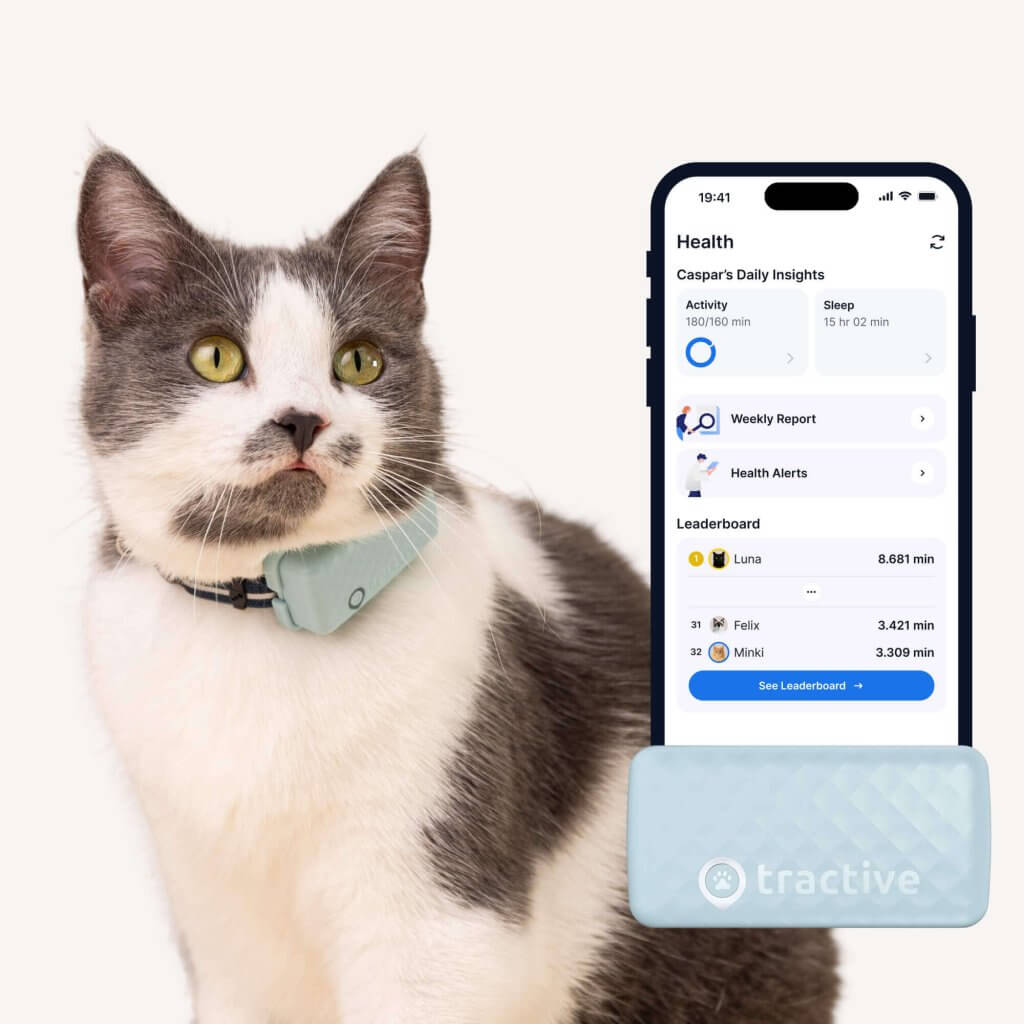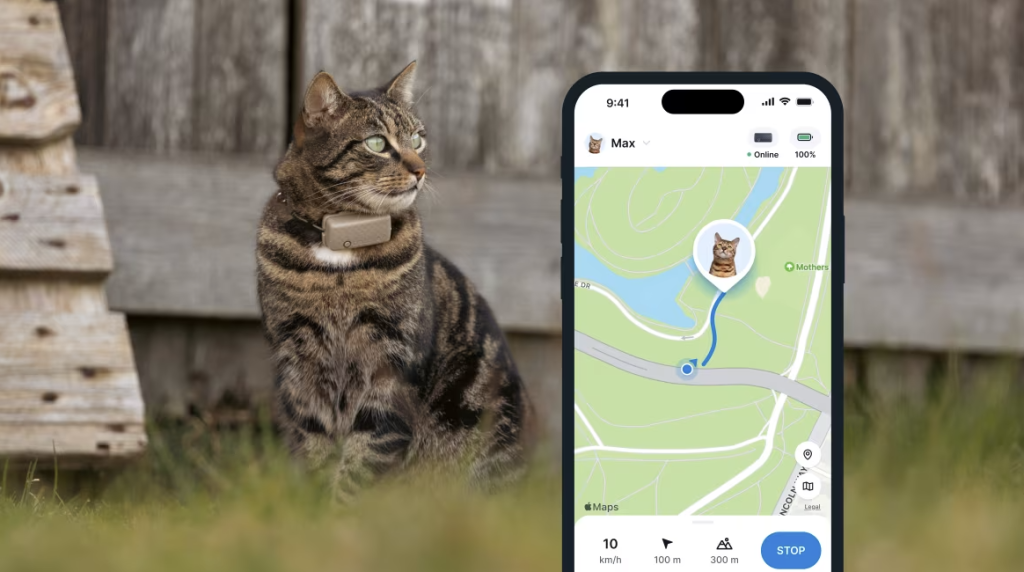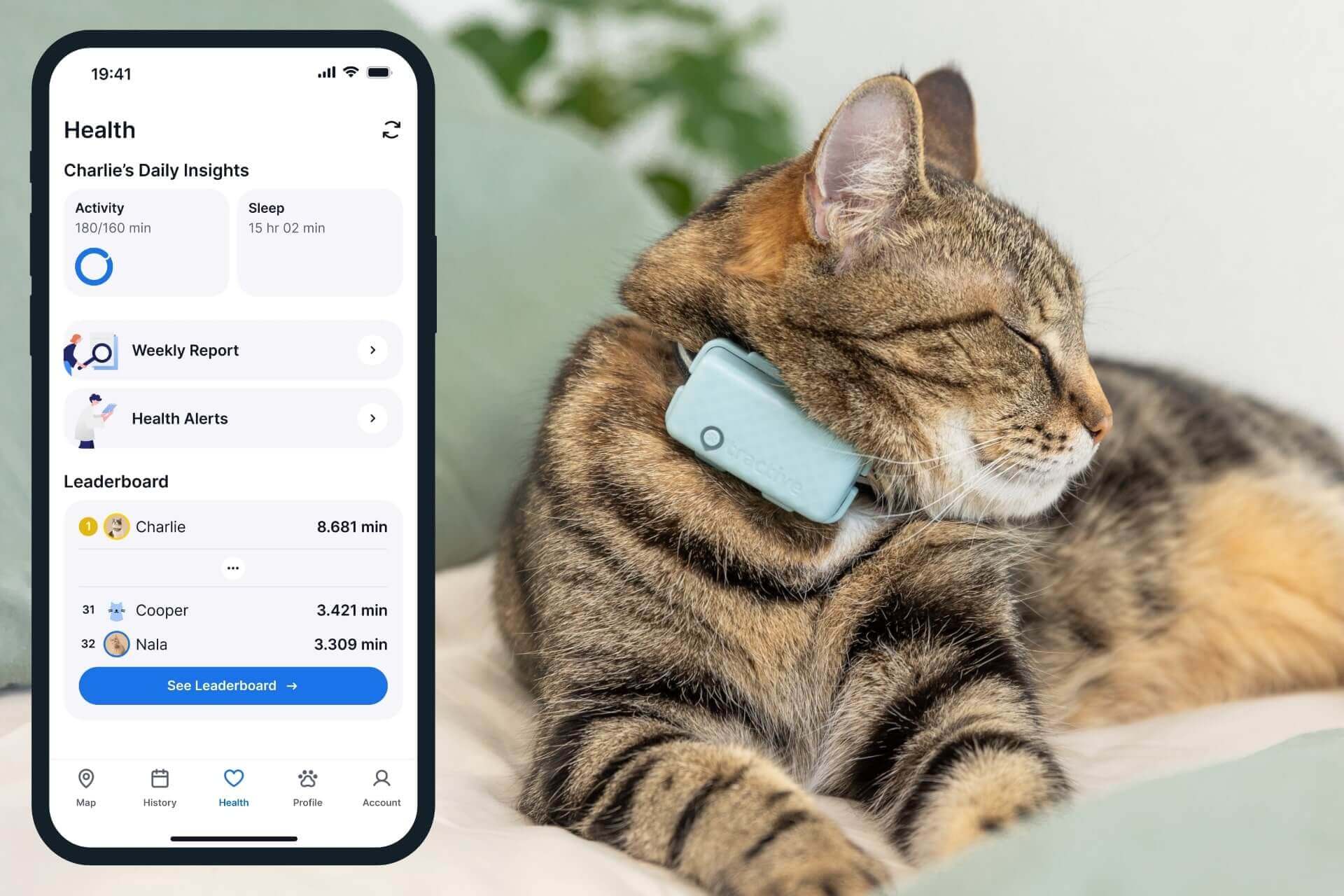Why Do Cats Hide When They Are Sick? 5 Reasons Behind It
Your little trooper might need some alone time when not well - but why do cats hide when they are sick? Here's everything you need to know about this instinctive behavior & what steps you can take.
If you’ve ever found your cat curled up in some strange spots – only to find that they’re not feeling well – you’ve probably asked yourself,“Why do cats hide when they are sick?” It’s a behavior that can feel frustrating and worrisome, but understanding why cats do this can help you take better care of them – and even save their life in some situations. Let’s dive into why cats retreat when they’re unwell, how you can spot the signs, and why keeping track of your cat’s whereabouts with a smart cat collar with real-time GPS tracking is a smart move.

Find out where your cat spends their time.
Read moreWhy do cats hide when they are sick? 5 main reasons
Cats are masters of hiding their pain – it’s a behavior dating back to their wild ancestors. Here are a few key reasons why many cats need a little alone time when they’re not feeling their 100%:
- Survival instinct
In their natural habitats, a sick or weak cat could easily become prey for other animals. By concealing their discomfort, they reduce the risk of attracting predators. While your little buddy isn’t fending off lions in your living room, this instinct isn’t going away any time soon. - Minimizing stress
Cats are sensitive to changes in routine; it can be pretty stressful for them. (Kind of like for us, to be fair.) Hiding helps them feel safe by allowing some control over their environment and avoiding any extra anxiety from a “ruined” routine. (Like trips to the vet.) - Avoiding conflict
Got multiple cats at home? They might hide illness to show the other cats not to mess with them. If a cat shows that they’re weak or vulnerable, the others might grow aggressive, steal their food or toys, or even exclude the sick cat from the group. Which can be stressful and isolating to handle. - Minimizing interference from humans
Many cats are naturally independent. When they feel unwell, they might retreat to a quiet, safe space and avoid letting us know about their illness. The solitude helps with rest and recovery. Sadly, this can make it more difficult for you to spot health problems early. - Pain tolerance
Most cats are little troopers with a high pain threshold. So they may not show obvious signs of discomfort even when they’re suffering. Like, for example, the typical “whining” or limping behaviors that dogs might show when in pain. Instead, cats may simply become less active, eat less, or retreat to their favorite hiding spots.
💡A smart cat collar can help you both pinpoint where your cat’s off hiding – but also monitor changes in your cat’s activity. (Where a weird drop could signal that they’re in pain or discomfort.) We’ll cover it in detail a little further below.

Get health alerts for your cat
Our cats can’t always tell us if something’s wrong. But if their tracker detects unusual changes in their routine, you’ll get an alert, helping you catch potential issues early.
Other reasons your cat might be hiding (besides being sick)
While illness is a common reason for hiding, it’s not the only explanation for this behavior. Cats tend to be grade-A weirdos on good days – so a whole bunch of factors can influence their hiding habits. Yours could be retreating away, for example, because of:
- Stress or anxiety
Changes in their environment, like moving to a new home, the arrival of a new pet, or even loud noises, can lead your cat to find a safe place to “hide” until they feel their environment growing more stable and predictable over time. - A need for alone time
Cats often hide simply because they want some time to themselves. This is especially true for senior cats who might prefer less interaction. - A game they’re playing
Some cats hide as part of a game or to prepare for a playful ambush – maybe on you, a toy, or one of your other pets. - The weather
Cats might hide in warm spots during colder weather or cool, shaded areas when it’s hot.
So unless your cat is show signs of discomfort or pain, hiding is usually a completely normal – even healthy – behavior.
Read more: Why Is My Cat Hiding? 5 Reasons Why & How To Find Them
How to tell if your cat is sick or in pain
Hiding alone isn’t always a sign of illness, but when combined with other behaviors, it’s worth paying attention. Watch out for red flags like if your cat is:
- Eating more or less than usual,
- Drinking more or less water than usual,
- Seeming lethargic,
- Grooming themselves more or less than usual – especially around the belly,
- Visiting the litter box more or less than usual,
- Seeming less active than usual – or, on the other hand, hyperactive
- Changes in vocalization, including meowing or hissing more – and at odd times, like at night
- Signs of pain, like limping, sensitivity when touched, or stiffness
- Seeming more withdrawn than usual – or, on the other hand, clingier than usual
Since cats often don’t vocalize their discomfort, their behavioral changes tend to be more subtle. You might notice them sleeping more than usual or grooming less. But you can easily miss these signs unless you’re paying very close attention.
Read more: 10 Signs Of Illness In Cats
How to find a hidden cat if you suspect they’re sick
If your cat is hiding and you’re worried they haven’t been themselves lately, here are some tips to find them:
- Start with any favorite spots
Check their usual hiding places first, like under the bed, in closets, or behind furniture. Quiet, dark spots like the insides of washers and dryers and garages also count. - Search quietly
Avoid loud noises or sudden movements. (These can drive your cat deeper into hiding.) Use a calm and soothing voice and call out their name in a gentle tone. - Use treats or toys
Shake their favorite treats or use a noisy toy to lure them out. Keep a bowl of treats by the door to entice them back home. - Look high and low
Cats can hide in surprising places, like on top of cabinets or inside boxes or even high above, like on the roof or rafters! Be thorough in your search. You might just find them crouched under your warm car. - Check outdoor areas
If your cat has access to the outdoors, look under porches, in bushes, or other sheltered spots nearby. On the bright side, most missing cats don’t tend to wander too far from home. - Use a flashlight
Even in daylight, a flashlight can help you spot your cat’s reflective eyes in dark hiding spots. - Search around “dark” times
Cats are crepuscular, meaning they tend to be most active around dawn and dusk. It’s possible yours might return if you search around these times.
💡Check out our guide on how to find a missing cat in case your buddy’s disappeared for longer than usual.
Where a smart cat collar can be a lifesaver
In case your cat does turn out to be sick and in the habit of hiding away – the stress of searching for them can add to their discomfort. (And yours!) This is where technology can lend a hand. Keeping track of your cat’s whereabouts becomes much easier with a smart cat collar. Here’s where your trusty Tractive device can make a big difference.
Real-time location tracking
Cats are hide and seek champions. They’ll squeeze into spots you didn’t even know existed: under the bed, inside closets, or behind furniture. But with a Tractive device strapped to your cat’s collar, you can quickly locate them in real-time – whether they’re hiding indoors or have wandered outside.

Imagine this: Your outdoor cat doesn’t come home for dinner. You check your Tractive GPS mobile app and see they’re close by but haven’t moved for hours. This could be a sign they’re unwell or injured. With the tracker, you can find them quickly and get them the help they need.
Activity & Sleep monitoring
Many GPS trackers, like the Tractive GPS, don’t just tell you where your cat is. With its built-in motion detector, yours also helps you keep track of their activity and sleep. Including:
- How active your cat tends to be on the regular,
- How much quality sleep your cat tends to get – and how often they were disturbed,
- And if there’s a weird spike or drop in your cat’s active minutes or sleep patterns
If your cat’s activity or sleep quality drop significantly, it could be an early warning sign that something’s wrong. You can share this data with your vet and help them diagnose potential health issues that much quicker and easier.

While cats may instinctively hide when they’re sick, you don’t have to be left in the dark. By observing their behavior, acting on warning signs, knowing how to find them, and using a smart cat collar as an emergency measure, you can ensure your buddy stays safe and healthy.
Read more: 8 Pet Parents Who Keep Their Cats Healthy With Tractive



